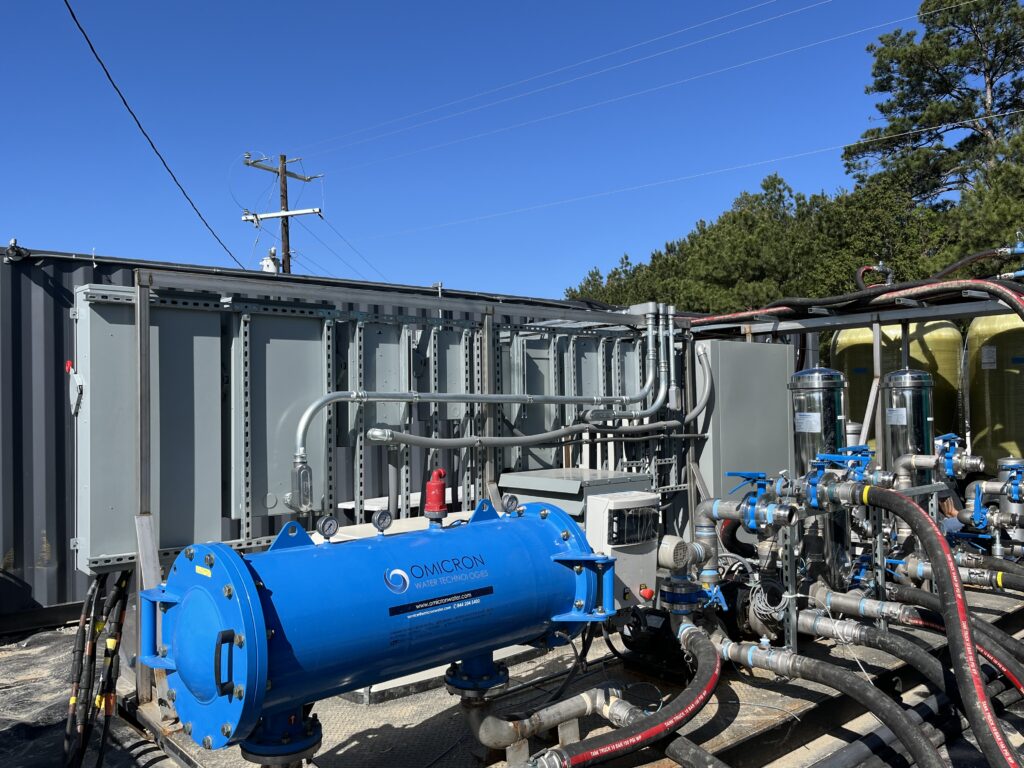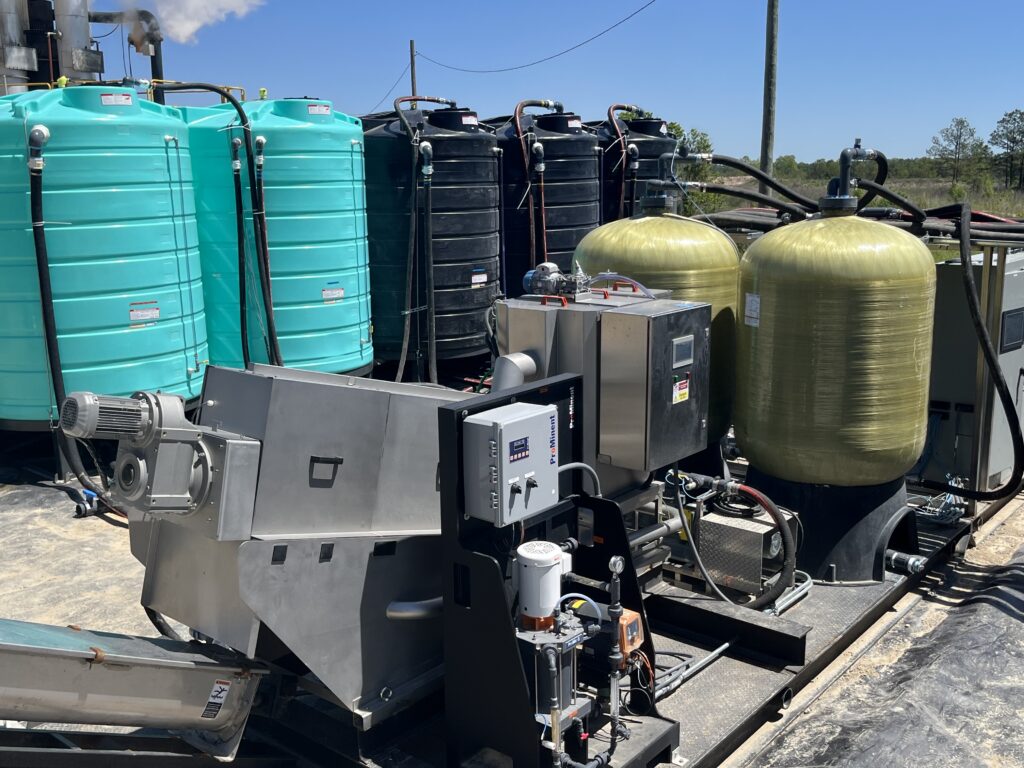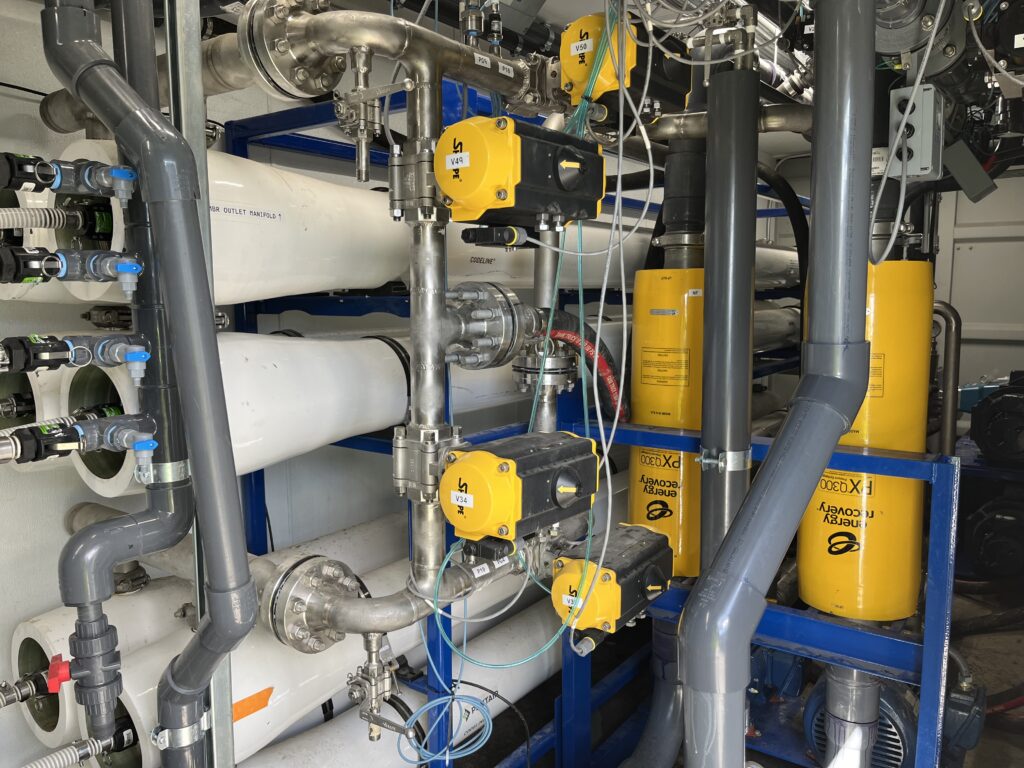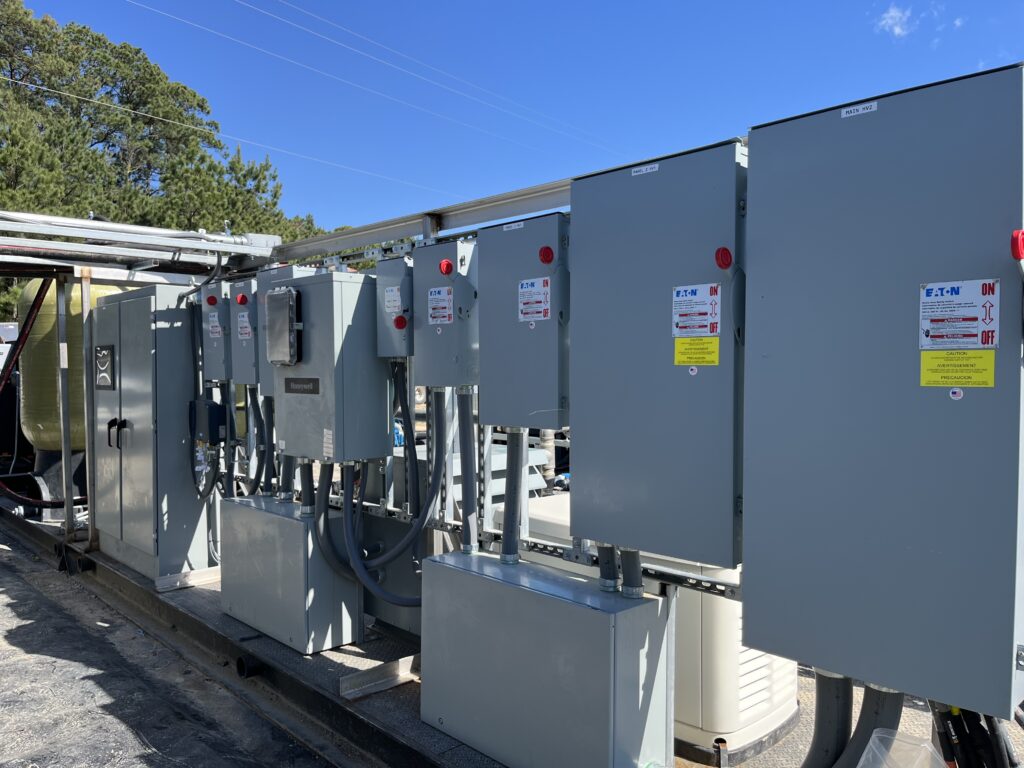The leachate treatment landscape is changing. New technologies and new regulations have generated a lot of new questions. Here we answer a few common ones about leachate treatment and management.
Use the links below to jump to the section you need.
Leachate 101
What is leachate?
As rainwater seeps through landfill waste, it leaches contaminants out of the trash, often turning into a thick, nasty sludge — leachate. The EPA requires landfills to collect, treat and safely dispose of it.
While the types and concentrations of leachate contaminants will vary from location to location, there are a few that show up in most landfills: organic carbons, dissolved and suspended solids, oil and grease, ammonia and per- and polyfluoroalkyl substances (PFOS/PFAS/PFOA).
What are PFOS/PFAS/PFOA?
Perfluoroalkyl and polyfluoroalkyl substances (more commonly known as PFOS/PFAS/PFOA) are chemicals that don’t break down over time. This is why they’re also called forever chemicals. These compounds come into landfills on products like clothes, packaging and frying pans, but also from sources like pesticides and contaminated daily cover dirt.
One of today’s biggest challenges facing the landfill industry is managing PFAS.
Because these chemicals don’t break down, they build up over time. Research has shown that exposure to higher concentrations may cause harm to human and animals, including low birth weight, fertility issues, increased risk of certain cancers and more.
Read more about PFAS here.
What leachate management options exist?
There are a number of ways you can manage your leachate, each with its own pros and cons. Some common ones include:
- Publicly owned treatment works (POTWs)
- Evaporation ponds
- Reverse osmosis
- On-site wastewater treatment plants
- Bioreactors or anaerobic digestors
To learn more about when it makes sense to use each of these solutions — and why you might need an alternative method — read this article.
Leachate regulations
What leachate regulations do landfills have to comply with?
There are a number of federal regulations that impact how landfills manage leachate, including Subtitle D of the Resource Conservation and Recovery Act (RCRA) and the National Pollutant Discharge Elimination System (NPDES), as well as countless state and local ones.
What you plan to do with your leachate effluent dictates the regulations you need to follow. For direct discharge, you’ll need an NPDES permit. But for non-direct discharge, such as on-site application, you’ll likely need a permit from your state’s Department of Environmental Quality (DEQ).
Understanding the process and securing the correct permits falls under a landfill’s responsibility. However, our team regularly supplies engineer and system design drawings, as well as documentation of power requirements and other data to the appropriate groups. We’re here to support you during this process.
How much PFAS can be in leachate?
The EPA has not yet regulated how much PFAS can be in leachate. However, the EPA has released new limits for how much can be in drinking water. The National Primary Drinking Water Regulation will be phased in over the next 3 years, and on average, limits most varieties of PFAS to 4-10 ppt.
This likely means that the EPA plans to release leachate-specific regulations at POTWs within the next few years, with other leachate restrictions soon after.
But while this new regulation doesn’t impact landfills directly, it does impact landfills indirectly. As publicly owned treatment works (POTWs) comply with the new drinking water standards, they will likely be stricter about the amounts of PFAS they’re willing to accept in leachate. This could cause some POTWs to hike up their prices or stop accepting leachate altogether.
Fortunately, the Atmos Leachate Treatment System (ALTS) can reduce the most common types of PFAS to very low or non-detect levels, which is in line with the new drinking water standards. Read more about how the ALTS handles PFAS and other common contaminants here.
When will the EPA regulate the amount of PFAS in leachate?
The EPA’s PFAS regulations don’t apply to landfills and leachate yet. We suspect they may introduce limits for the acceptable amount of PFAS in leachate effluent sometime in 2025 with a multi-year transition period.
Though we don’t know what those PFAS limits will be, we are confident we can help landfills meet these future limits.
How does the Atmos Leachate Treatment System keep up with evolving regulations?
The EPA isn’t the only governing body with evolving regulations. Often, contaminant level limits vary state by state, even county by county — what’s acceptable in Oklahoma may not be acceptable in California, and vice versa. And just because the EPA hasn’t released federal PFAS regulations doesn’t mean states won’t enact their own limits. The same rings true for other contaminants.
The Atmos Leachate Treatment System is modular, making it highly customizable and more than capable of keeping up with changing standards. For example, when the EPA enacts leachate effluent limits, a landfill may need an additional reverse osmosis unit to comply with stricter regulations. We can accommodate that. Or a municipality could decide to put higher limits on their TOC counts. To meet compliance, we could add another nano filtration module.
Read this case study for an example of how the ALTS can be customized to meet your goals.
The Atmos Leachate Treatment System
What is the Atmos Leachate Treatment System (ALTS)?
The Atmos Leachate Treatment System, or the ALTS, is a new way for landfills to manage their leachate. The system filters contaminants out to leave you with clean water for reuse or disposal.




Visit the leachate management page to dive deeper.
How does it work?
The Atmos Leachate Treatment System combines modules of three separate technologies — ultra filtration, nano filtration and reverse osmosis (RO) — with an option of biological pre- or post-treatment.
Ultra filtration removes most of the larger contaminants, like total dissolved solids (TDS) and total suspended solids (TSS), so they don’t clog the finer membranes of the nano filtration and RO systems. Together, this combination works more effectively than any of these technologies on their own.
Thanks to the system’s modular design, we can customize it to your needs. For example, the ALTS typically treats between 2,000 and 200,000 gallons of leachate per day. If you need to increase the capacity, or don’t produce that much leachate, we can add or subtract modules as necessary. Or if your landfill struggles with solids, we can add a second ultra filtration module to handle that load more efficiently.
Does the ALTS eliminate leachate?
No, the Atmos Leachate Treatment System does not eliminate or erase leachate. Instead, it cleans and treats your leachate by filtering the contaminants out. This will leave you with both a waste stream and a clean water stream.
Learn more about the contaminants the ALTS targets here.
What do typical results look like?
The results will vary depending on how contaminated your leachate is to begin with and how clean you need it to be after treatment.
However, this example data can give you an idea of what typical results look like. The first chart shows the before and after data of a desert landfill with a high contaminant load, while the second shows a Gulf Coast area landfill with a more moderate contaminant load.
| Contaminant | Raw leachate | ALTS treated leachate | Contaminant reduction (%) |
| TOC | 30,800 mg/L | 48 mg/L | 99.8 |
| TDS | 80,800 mg/L | 204 mg/L | 99.75 |
| Oil/grease | 13 mg/L | 0 mg/L | 100 |
| PFOS | 400 ppt | 1.52 ppt | 99.62 |
| PFOA | 1,060 ppt | Non detect | 100 |
| PFHxS | 151 ppt | Non detect | 100 |
| PFNA | 204 ppt | Non detect | 100 |
| PFBS | 424 ppt | Non detect | 100 |
| Contaminant | Raw leachate | ALTS treated leachate | Contaminant reduction (%) |
| TOC | 10,000 mg/L | 32 mg/L | 99.7 |
| TDS | 28,000 mg/L | 1,370 mg/L | 95.1 |
| TSS | 390 mg/L | 3.5 mg/L | 99.1 |
| Oil/grease | Non detect | Non detect | N/A |
| BOD | 2,330 mg/L | 76 mg/L | 96.7 |
| COD | 40,000 mg/L | 101 mg/L | 99.7 |
| PFBS | 27,500 ng/L | Non detect | 100 |
| PFHxA | 7,560 ng/L | Non detect | 100 |
| PFBA | 1,750 ng/L | Non detect | 100 |
| PFPeA | 1,810 ng/L | Non detect | 100 |
| PFOA | 934 ng/L | Non detect | 100 |
| PFHxS | 352 ng/L | Non detect | 100 |
What can I do with the clean water?
Depending on your permits and how clean you need your water to be, there are a number of things you can do with it. For example, you could direct dispose it, like this Gulf Coat landfill, or you could use it in an on-site application, like for dust control, washing trucks or as part of your Atmos Daily Cover system.
Whatever you want to do with the water, we’ll design the system to help you meet those goals.
What’s my responsibility and what’s Atmos’ responsibility?
To get the Atmos Leachate Treatment System up and running, we need two things from you: power and a site that measures between 2,500 and 10,000 square feet to house the system and its skids. That’s it. We handle the rest — startup, initial testing, maintenance, operations, filter replacements, adjustments to stay in compliance, all of it. You won’t have to hire anyone to run the ALTS.
How do I pay for the ALTS?
The Atmos Leachate Treatment System operates on a pay-as-you-go model. So, much like our other equipment, there is no capital expense to install and run the ALTS at your landfill.
You’ll only pay for each gallon that we successfully treat.
How does installation work?
Once we gather raw leachate samples, determine your goals and design the system, it takes about 10 weeks to build your Atmos Leachate Treatment System.
From there, we load it onto two flatbed trucks for delivery — one for the 40-foot container with the bulk of your system and one for the skids. When we arrive, you point us to the right spot, and we’ll unload and install.
After that, you can expect our team to be on site for another 2 – 4 weeks while we connect the power, get the hoses set up, pressure test the ALTS with clean water to check for leaks, then test it with your leachate. We won’t leave until we’ve proven the system works.
Still have questions? Get in touch with our team.
If you didn’t find the answers you were looking for, talk to one of our experts.



